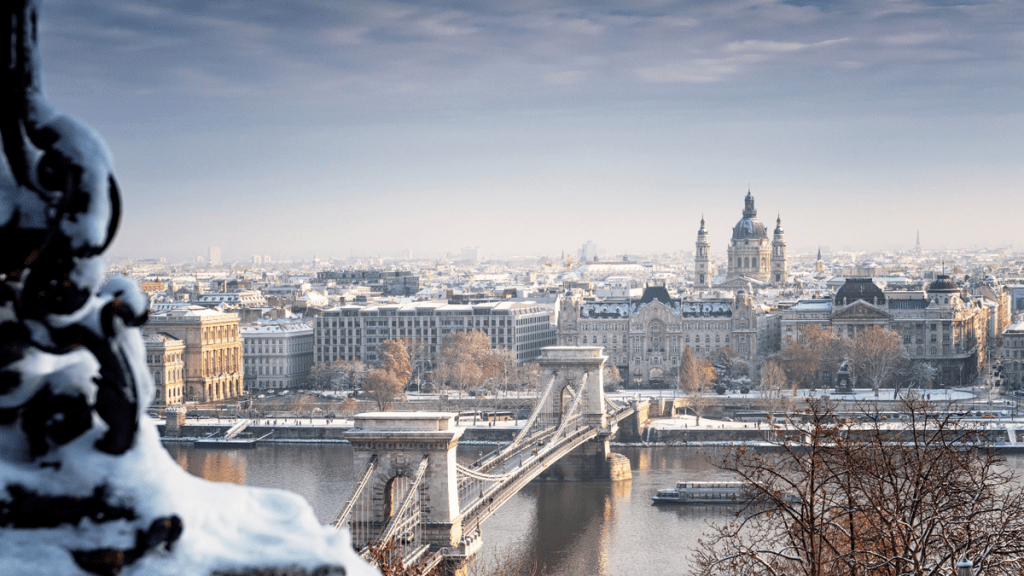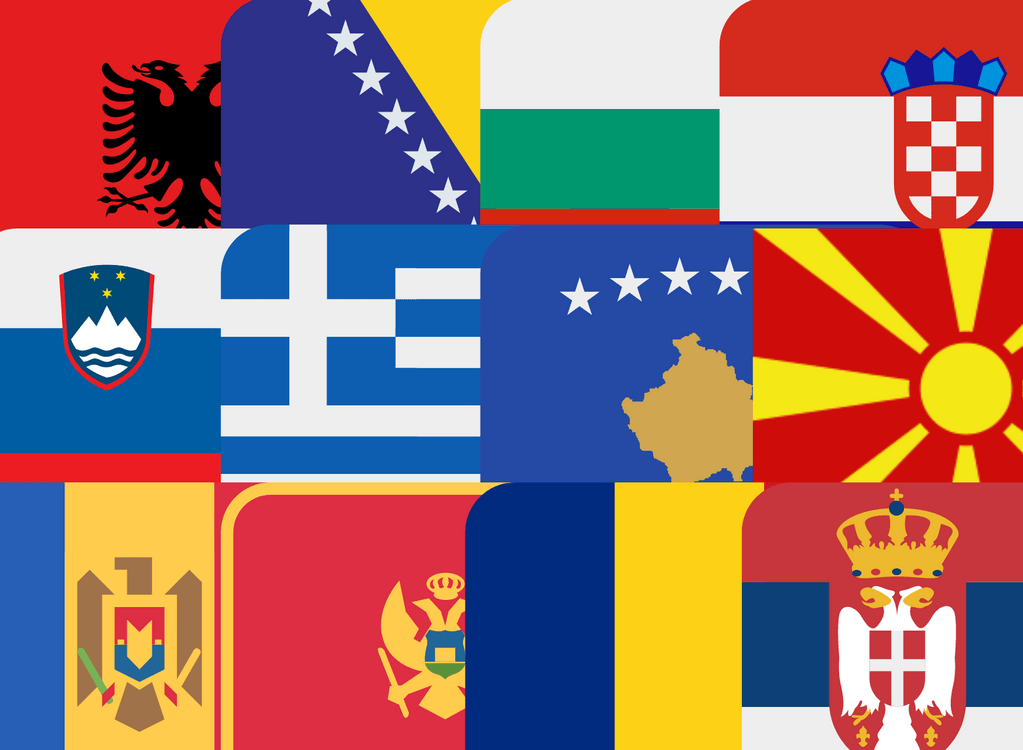The most magical winter is in Eastern Europe
When thinking of winter trips to Europe, the focus is often on the Alps, snowy Paris or the ski slopes of Switzerland. However, to the east of the continent hide jewels that in winter reveal a silent, authentic and deeply cultural charm. Winter destinations in Eastern Europe offer a different experience: less mass tourism, affordable prices and scenarios that seem to come out of a fairy tale.
From snow-covered medieval castles to Christmas markets in Eastern Europe that illuminate historic cobbled streets, this region is perfect for those looking for a different getaway. Here, winter is not just a season: it is a scenario that transforms cities, traditions and landscapes into something magical. In addition, places such as Hungary, Slovenia, Bosnia and Romania offer natural hot springs, unique festivities and a human warmth that contrasts with the cold outside.
In this article we will explore four destinations that stand out for their unique winter atmosphere, combining history, nature and Christmas customs with prices that favor the intelligent traveler. Get ready to discover an alternative, welcoming and surprising Europe.
Transylvania: snowy castles and medieval markets
In the heart of Romania, Transylvania comes to life in a special way during the winter. This region, famous for its legends of Dracula and its Gothic fortresses, is transformed into a silent white setting that seems stopped in time. Snow-covered mountains, castle towers and cobbled villages create a magical atmosphere that makes visitors fall in love.

One of the most impressive points is Bran Castle, which in winter is wrapped in a mystical fog. Although popularly linked to the myth of Dracula, the truth is that its history goes far beyond folklore. The visit in winter allows you to enjoy the place without crowds, with a privileged view of the snowy Piatra Craiului mountains in the background.
But Transylvania is not just castles. In cities like Sibiu and Brasov, Christmas markets in Eastern Europe find their maximum expression. Medieval squares illuminated with warm lights, local craft stalls, traditional sweets such as kürtoskalács (mantlebread) and carols that resound in centuries-old churches, complete an authentic Christmas experience.
In addition, many of these markets are less known internationally, which translates into fewer tourists, lower prices and a more intimate atmosphere. In Brasov, for example, the market extends into the central square in front of the Black Tower, surrounded by cozy cafes where you can warm up with spiced mulled wine.
Transylvania in winter is not only a trip to the past, it is a walk through scenarios where history and snow go hand in hand to give an experience that goes far beyond conventional tourism.
Budapest: Thermal baths in winter with smoky views
Few winter experiences in Eastern Europe are as memorable as immersing yourself in warm waters while the snow falls gently around. That is precisely what Budapest offers, a city whose thermal history dates back to the Romans and that in winter becomes an oasis of steam and imperial architecture.
The thermal baths in Hungary in winter are not only a tourist attraction, but an integral part of the Hungarian lifestyle. Among the most famous is the Széchenyi Spa, a neo-baroque-inspired complex with more than 15 thermal pools. In the middle of winter, its outdoor pools – with temperatures around 38°C – create a spectacular visual contrast with the rising steam and the snowy tops of the surrounding trees.
Another unmissable option is the Gellért, whose art nouveau architecture and colorful mosaics make it one of the most beautiful bathrooms in Europe. In winter, these spaces offer a multisensory experience: the heat of the water, the cold of the air, the echo of the ancient domes and the calm of the low season.
In addition to physical rest, Hungarian hot springs are an excellent way to connect with local life. Many Hungarians come daily, even on the coldest mornings, to relax, socialize or play chess in the pools.
And the best: Budapest in winter is still affordable. The entrance prices to the bathrooms are affordable, and outside the high season, accommodation and flights tend to be considerably cheaper.

Ljubljana: Christmas in a fairytale city
Ljubljana, the capital of Slovenia, is one of those cities that seem to come out directly from an illustrated book, especially in winter. Small, cozy and perfectly walkable, it dresses in lights and traditions during December, when its historic center is transformed with a fairytale Christmas market.
The market extends along the Ljubljanica River, where wooden stalls sell everything from local handicrafts to hot honey liquor (medica), while street musicians and choirs fill the icy air with music. The city’s Christmas lighting, designed each year by local artists, combines geometric figures, stars and constellations, creating an unforgettable night walk.
The baroque architecture of the center, crowned by the castle of Ljubljana on a snowy hill, reinforces that magical air that makes the city look like a movie setting. In addition, thanks to its compact size, it is easy to explore everything on foot or by bike, even in winter.
Although Slovenia is not always on the classic lists of European Christmas destinations, Ljubljana is gaining more and more attention among those looking for a less commercial, more intimate and culturally rich alternative. It is perfect for a short winter getaway, combining history, aesthetics and a warmth difficult to find in larger cities.
Sarajevo: History, snow and Bosnian coffee
Sarajevo, the capital of Bosnia and Herzegovina, is one of the most unique destinations in Eastern Europe. Its multicultural past – a mixture of Ottoman, Austro-Hungarian and Slavic influences – is perceived in every corner, from architecture to gastronomy. In winter, the city is covered with snow and reveals a serene and nostalgic side that makes it even more special.
Walking through Bašcaršija, the ancient Ottoman bazaar, between cobbled streets and ice-covered minarets, is like going back in time. Here, Bosnian coffee is served in the traditional style, in small cups accompanied by lokum (typical sweets), in cafes with wood stoves that invite slow conversation and contemplation.
Sarajevo also offers active winter options, such as skiing in the nearby mountains of Bjelašnica and Jahorina, home to the 1984 Winter Olympics. These resorts, still little crowded, combine affordable prices with spectacular views and a good infrastructure for snow sports.
What distinguishes Sarajevo, however, is its ability to excite. Its recent history, marked by war, contrasts with the warmth of its people, who receive the visitor with pride and generosity. Sarajevo in winter is a destination that touches the soul: cold on the outside, but intensely human on the inside.
Tips for traveling to Eastern Europe in winter
To make the most of this winter route, here are some practical tips:
Dress in layers: the weather varies between countries and can be very cold. Waterproof jacket, thermal gloves and non-slip boots are essential.
Book in advance: although many destinations are not crowded, the Christmas season can generate high occupancy in small accommodations.
Look for low-cost flights: regional airlines such as Wizz Air or Ryanair connect many of these cities for very competitive prices in winter.
Take advantage of public transport: trains and buses are safe, efficient and cheap. They are also an excellent way to see the snowy landscapes between cities.
Opt for local accommodation: family apartments or guesthouses are not only cheaper, but offer a more authentic and warm experience.

Between snow, history and cultural warmth
Traveling to winter destinations in Eastern Europe is discovering a more intimate side of the continent. Away from the hustle and bustle of classic Western destinations, this region offers experiences that mix deep history, snow-covered landscapes, sincere hospitality and traditions that are still lived with pride.
From the snowy castles of Transylvania to the thermal baths in Hungary in winter, through the aesthetics of Ljubljana or the emotion of Sarajevo, every stop is a living postcard. And the best: all this is possible with a tight budget, without sacrificing quality or charm.
Eastern Europe in winter is not just an alternative; it is a destination in itself. Perfect for those looking for the different, the authentic, what leaves a mark.
